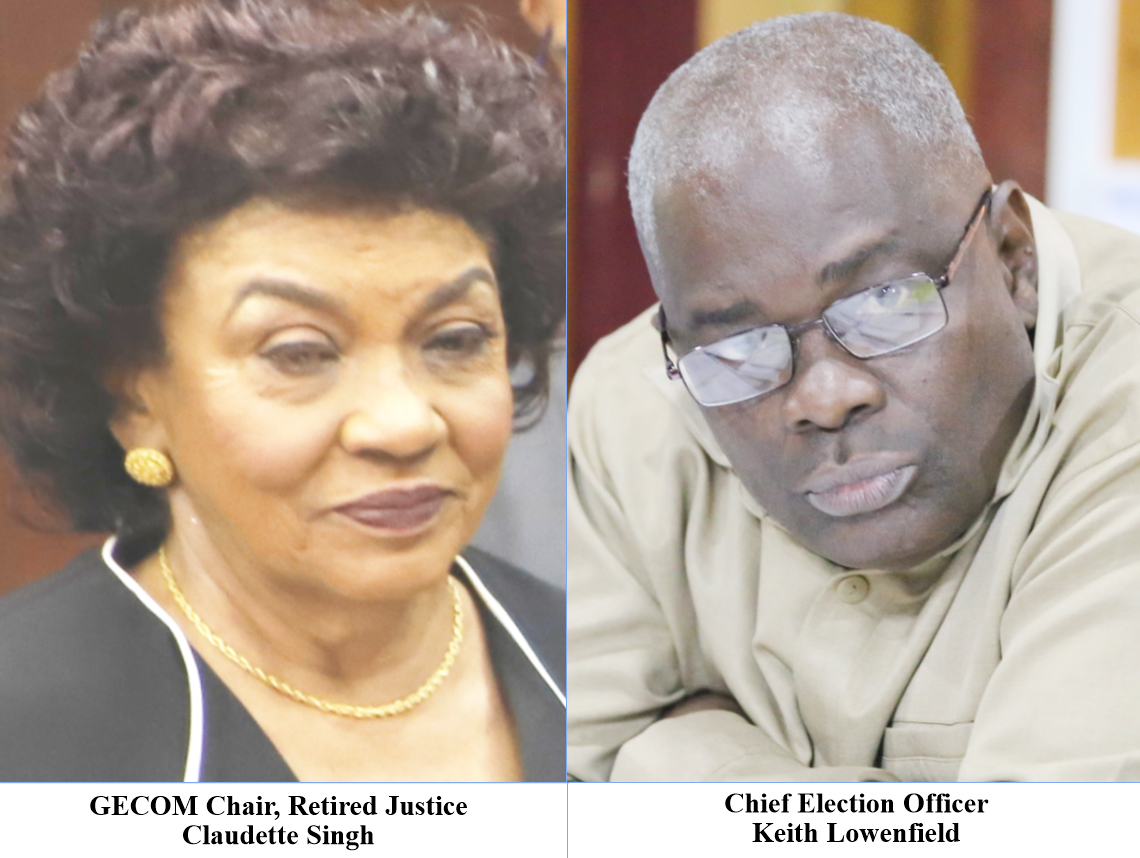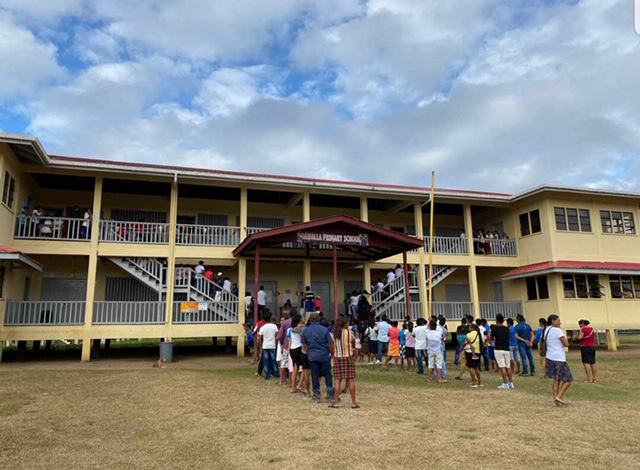
April 17, 2020
There had been a lengthy and politically contentious period leading up to the March 2 general elections. Back in December 2018 the APNU-AFC coalition administration had lost the no-confidence vote in the National Assembly, when one of its number, Charrandass Persaud, had voted with the opposition.
The journey from the outcome of that occurrence to the March 2, 2020 general elections and its outcome, so far, has already been well-documented. It has been, to say the least, a politically unpalatable period, strewn with protest, litigation and at the end of it all a general election that ignited an ugly upheaval over an as yet officially undeclared result, the most notable feature of which was a vigorous challenge to the declared result for Region Four, which includes the country’s capital, Georgetown, the withdrawal of all but the CARICOM observers from the electoral process in controversial circumstances and thinly veiled indications that they were not persuaded that the ‘numbers’ proffered after the Region Four count were accurate. The end result of all this has been, first, that more than a month after the March 2 poll, an official result remains unavailable, the political administration stands accused in some quarters of seeking to manipulate the actual result and the country, not for the first time, in a state of post-elections controversy and tension.

Polling Day: Voting at the Jawalla Primary School in Region Seven. (Photo by Deputy Toshao Mariza Clement) (File photo)
The March 2 poll had built its ‘head of steam’ from the outcome of the December 2018 no-confidence motion and the intensity of the campaigning pointed to the likelihood that the outcome would be close. Part of the campaign push of the PPP/C, more particularly, its Leader, Bharrat Jagdeo was that those members of the PPP who might have voted with the AFC as part of the coalition that had secured a one-seat majority, might return to the ‘home’. But there were other hopefuls, too, some thinking that the March poll might offer some indication of a readiness to at least begin a process of ending the ethnic divide that has historically blighted this country’s political process. That, it seems, turned out not to be the case.
At one point what appeared to be ‘coming through’ in the ruling coalition’s campaign was an argument that the good fortune of the country’s May 2015 oil find ought to be more than sufficient to unite the country in pursuit of a new economic direction. Here again, the voting pattern appeared to make a different pronouncement. The old divisions appeared to have remained intact.
Setting aside for a moment the March 2 poll and its continually unfolding drama there are other developments that occurred during the designated term of office of the coalition that merit mention. Both of those mentioned here have to do with the respective leaders of the two major political parties. The first has to do with the sudden seeming threat of the likelihood that President David Granger’s term in office might be truncated by news that he was stricken with non-Hodgkin’s lymphoma and would have to undergo several rounds of treatment in Cuba. That did not turn out to be the case. Indeed, overall, he may even have secured a greater measure of national admiration as leader of the country even if his comings and goings from Havana did appear to create a national sense of his human frailty.
Then there was Bharrat Jagdeo who appeared to have to wade his way through some amount of pushback from within the PPP itself before emerging as the Party’s ‘maximum’ leader. That process was acknowledged in some quarters as a demonstration of his will and his ability to brush his critics aside. If the PPP/C had named former Housing Minister Irfaan Ali as its presidential candidate, the piloting of the PPP/C to the March 2 general elections was all about Bharrat Jagdeo. No one questions the reality that if the ‘Third Term’ constitutional caveat precluded him from running for office again, he remained the PPP’s numero uno.
For the ruling coalition the political fly in the ointment reposes in the numbers turned out by the vote count in Region Four which gave the ruling coalition a slim majority that would see it returned to office. The veracity of the numbers was assailed from several sides and ran into rejection not just from the all of the other parties that had contested the elections but from the international observer groups themselves. Of note, as well, was the fact that questions about the veracity of the Region Four count has also been raised by a one-time member of the Coalition Cabinet, Dominic Gaskin, the administration’s former Minister of Business.
What seemed set to be a protracted political controversy to match the one sparked by the December 2018 confidence vote in the National Assembly appeared to have been averted after it was announced that President Granger and Opposition Leader Jagdeo had agreed to a re-count of the Region Four votes under the supervision of a CARICOM team. That seeming breakthrough, however, was snuffed out by a successful approach to the courts by an APNU Candidate at the general elections to have the recount aborted. Afterwards, CARICOM Chairperson, Barbados Prime Minister Mia Mottley, whom, it seemed, had played a key role in seeking to break the recount logjam declared suggestively that it was “clear there are forces that do not want to see the votes recounted.” Afterwards she dropped what could only be described as an undisguised hint that any government sworn in without a credible tabulation would lack legitimacy. That remark would not have gone unnoticed either here or anywhere else in the region that Ms Mottley was sending a signal that CARICOM would not welcome an outcome to the elections that appeared questionable. Since then, the political saga appears to have slipped back into the clutches of the courts.
The administration, meanwhile, has had to fend off not just a series of urgings from local organisations including the business sector to hasten the settling of the Region Four count and the swearing in of a government based on a verifiable overall count and from external sources, but also a United States Government (which possesses an accustomed proclivity for couching such messages in thinly veiled threats) ‘warning’ that there would be unspecified consequences if this course of action was not followed. The coalition administration responded with the familiar “sovereign nation” retort.
There are, it has to be said, broader issues that attend the political goings-on in Guyana, which, while in practical terms, are inseparably hinged to the political culture, are all too often downplayed in popular discourse, or ignored altogether. It had seemed to some observers that the disclosure of a major oil discovery offshore Guyana might have not only created a sense of opportunity for a significant socio-economic breakthrough for Guyana, but might, as well, have helped to slay the ghost of an ethnic divide, a gremlin that has haunted us for an eternity from inside a cramped closet in which we had sought to stuff it. As it happens, it has stubbornly refused to ‘stay put’. Some analysts of race and politics in Guyana have declared in the wake of the March 2 poll and its attendant controversy that we have been provided with a far from encouraging statement on the matter of ethnic cohesion.
Contextually – though the extent of the attention it has attracted amidst the compelling distractions of the broader political tsunami is unclear – it is worth drawing attention to a letter penned in the wake of the March 2 general elections by Moses Bhagwan and Eusi Kwayana – writing as they said as “two Guyanese who have come out of the leadership of both major parties [the PPP and the PNC]” and who have “lived through the violence of the 1960’s” – seeking to persuade the country’s two major political (ethnic) forces to “surrender their narrow goals and use the division of spoils as the basis for an immediate agreement of a joint government based on the verified results of the 2020 elections.” It can, as well, hardly be without significance that even amidst the controversy still raging over the outcome of the March 2 poll, both the Working People’s Alliance (WPA) and the Alliance for Change (AFC) the majority People’s National Congress’ (PNC) key partners in the umbrella A Partnership for National Unity (APNU) are now themselves openly pushing for a Government of National Unity.
It is, however the issue of ‘getting the numbers right’ in the interest of ‘freedom and fairness’ that continues to dominate the local political landscape. The endgame it seems, remains the question of power, rather than some attempt at a workable formula for cohesiveness, never mind the fact that the political cauldron in which that power is being brewed is proving, repeatedly, to be a poisoned chalice.
